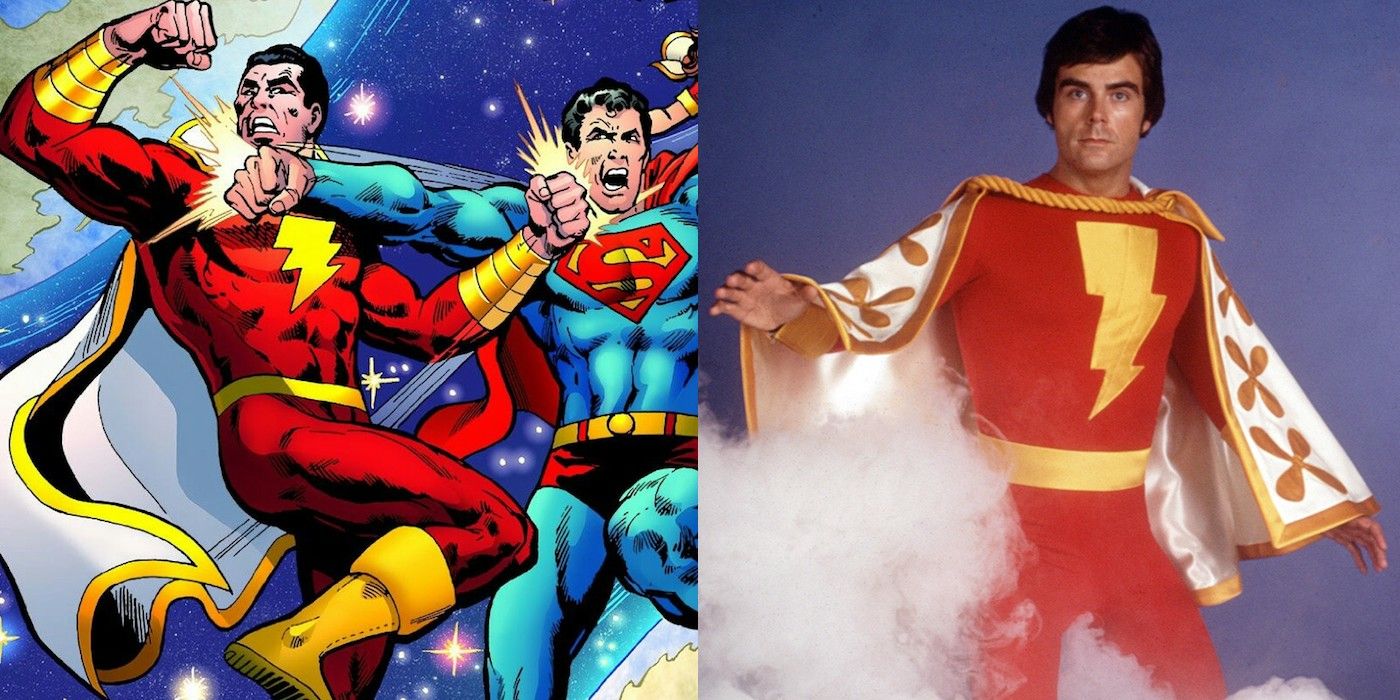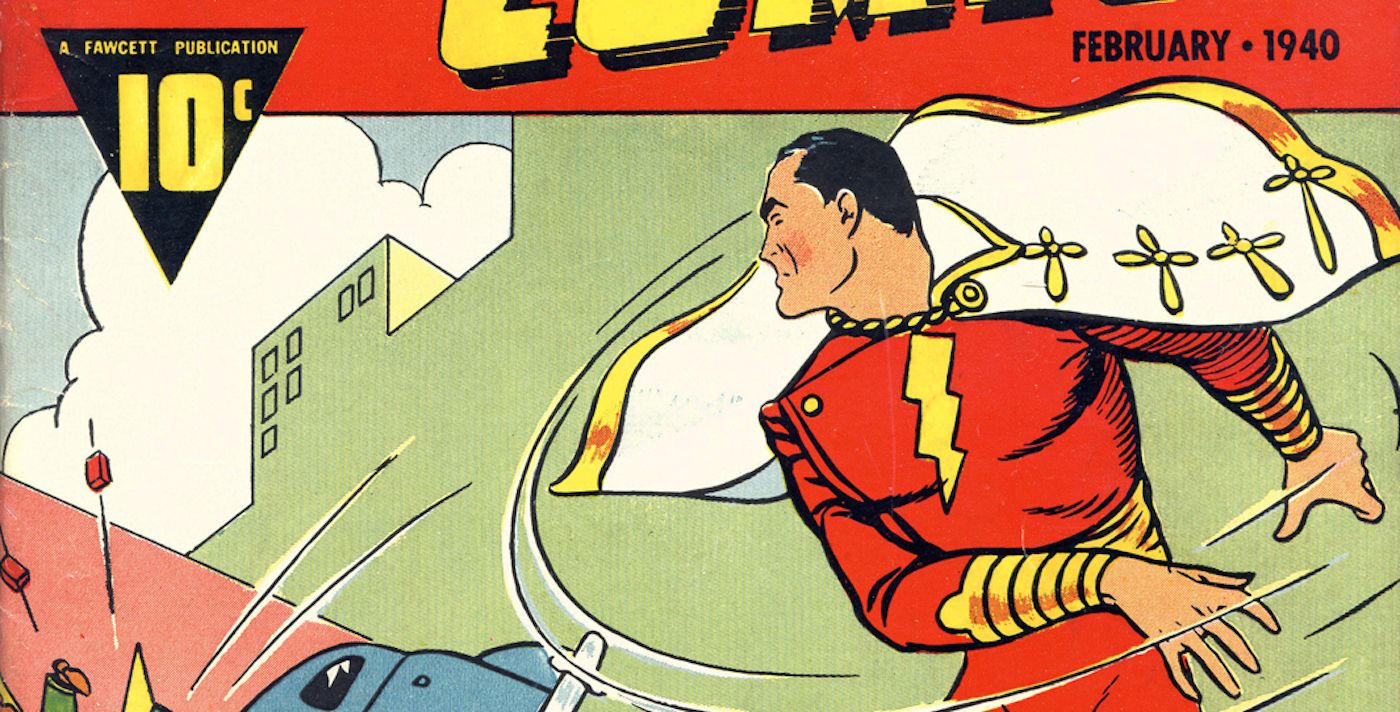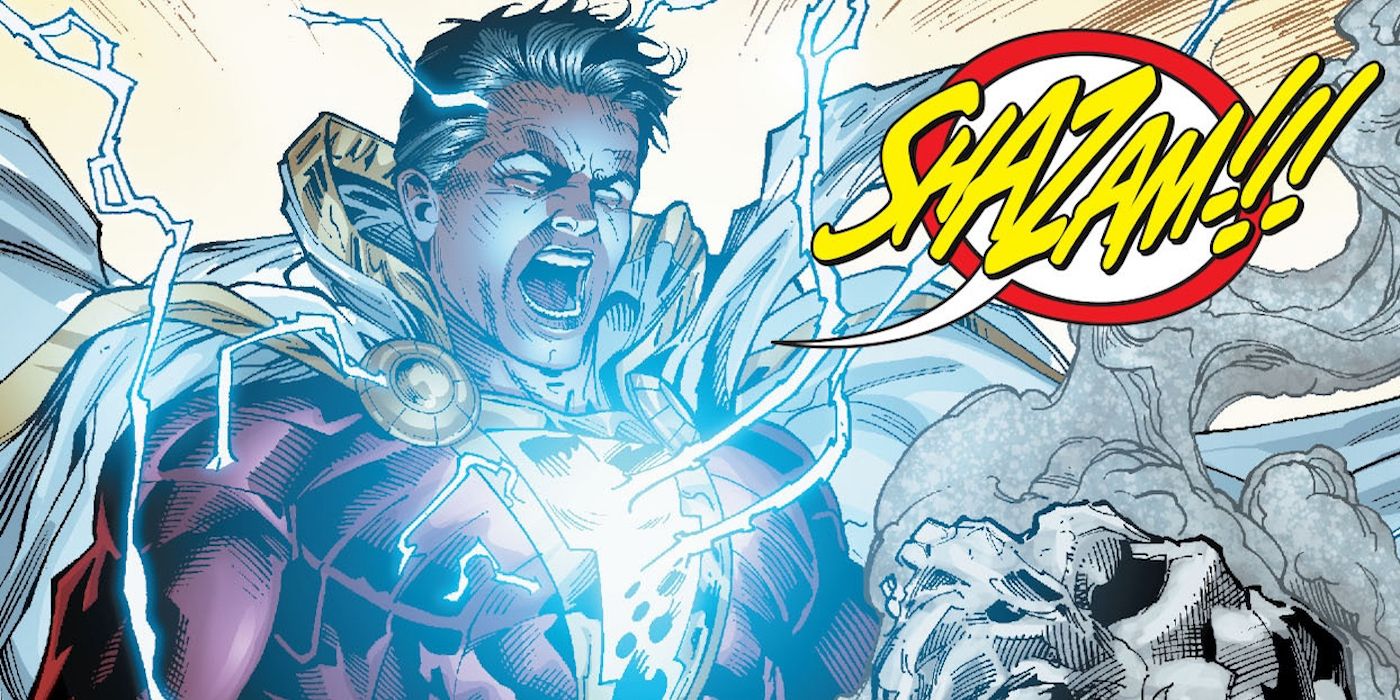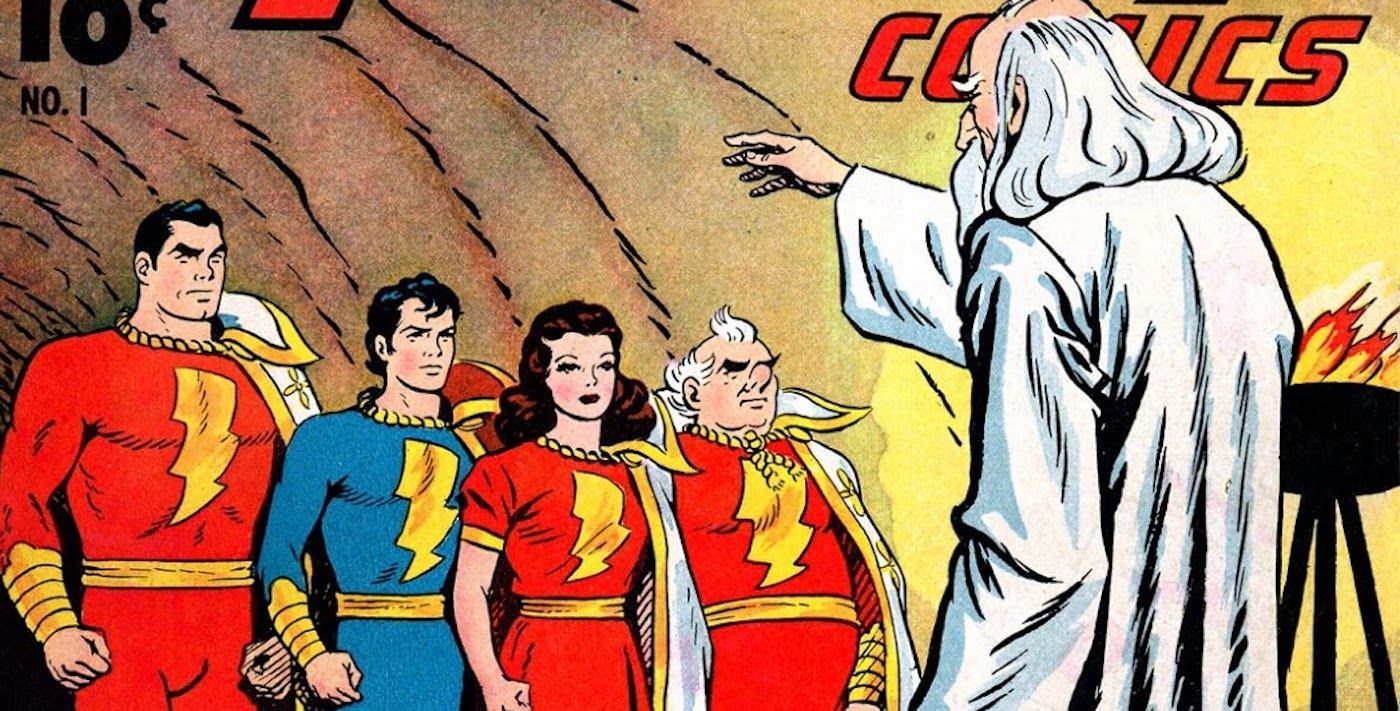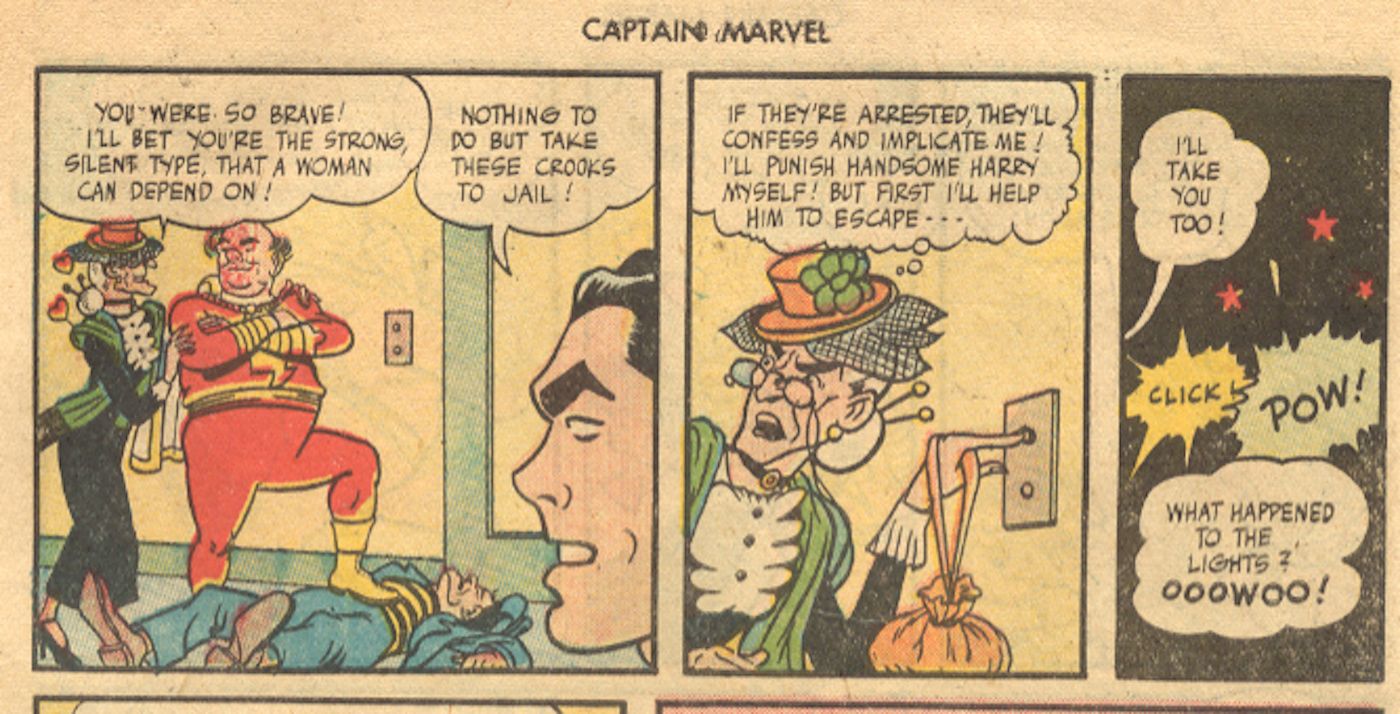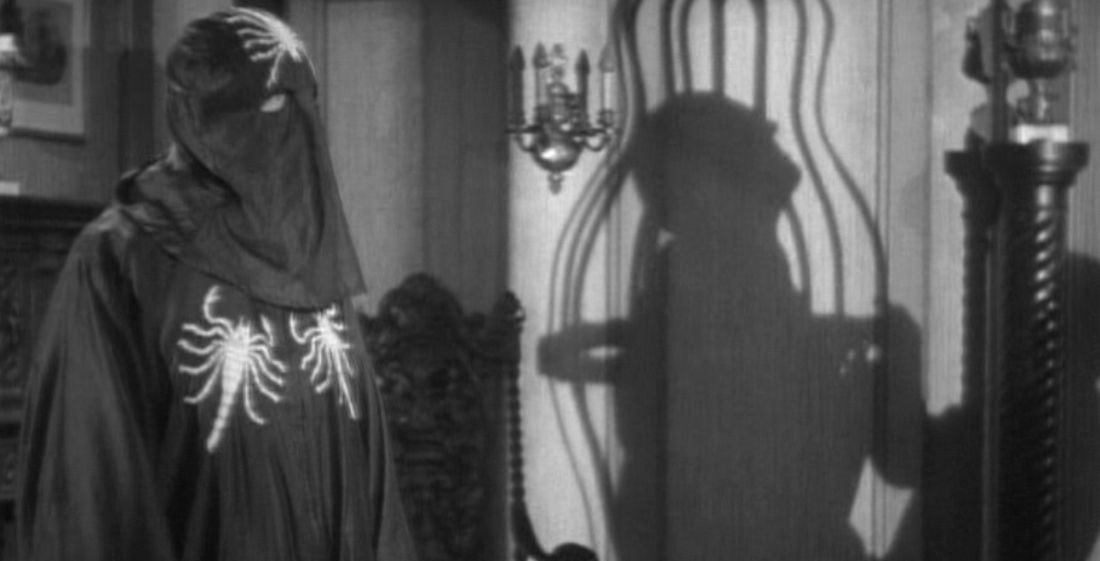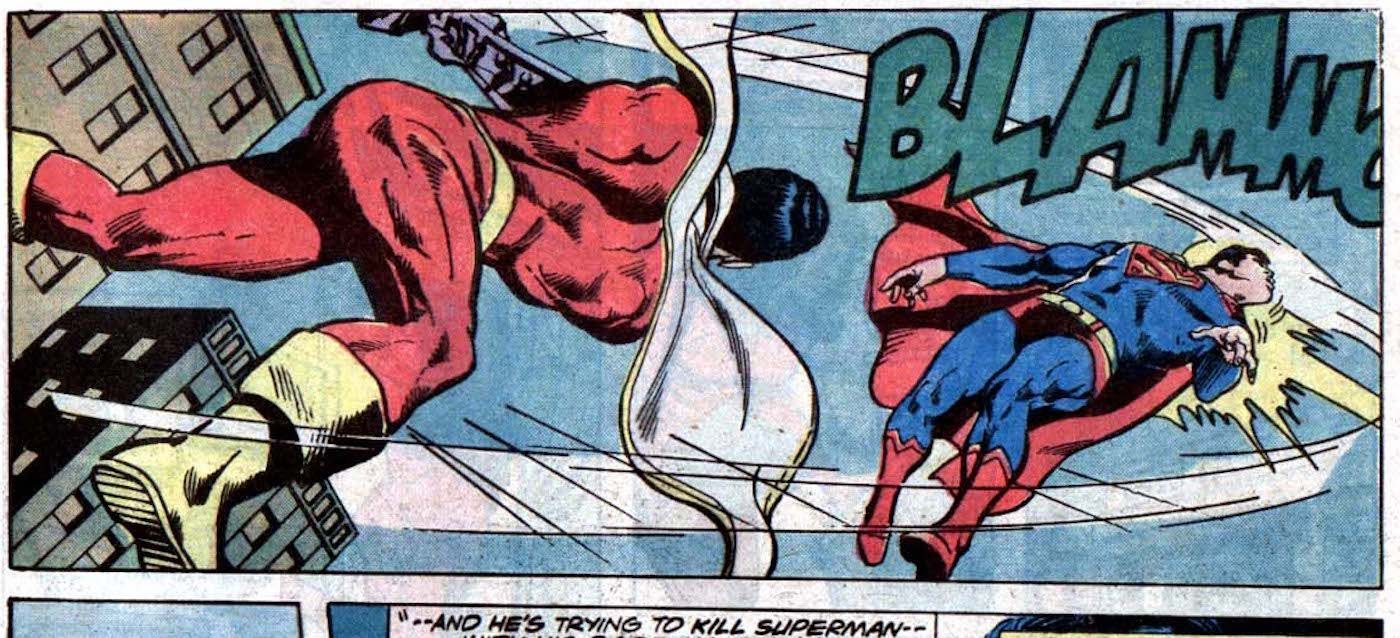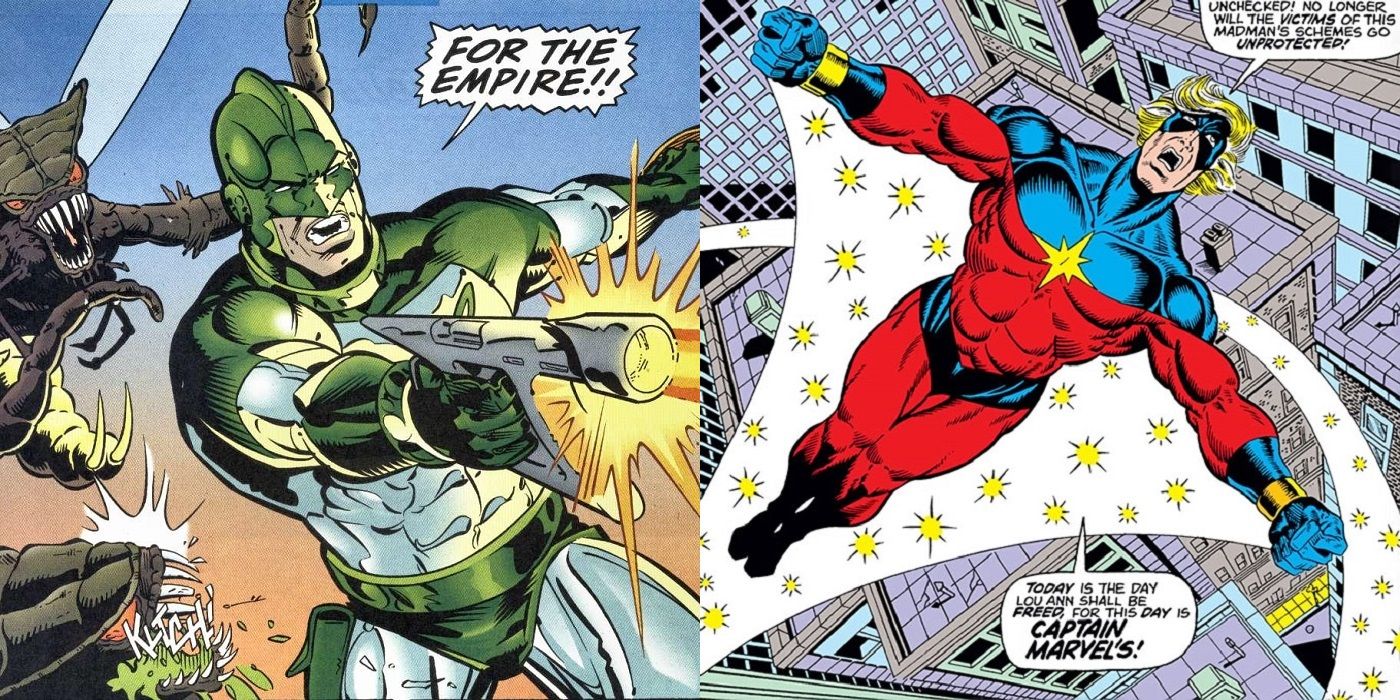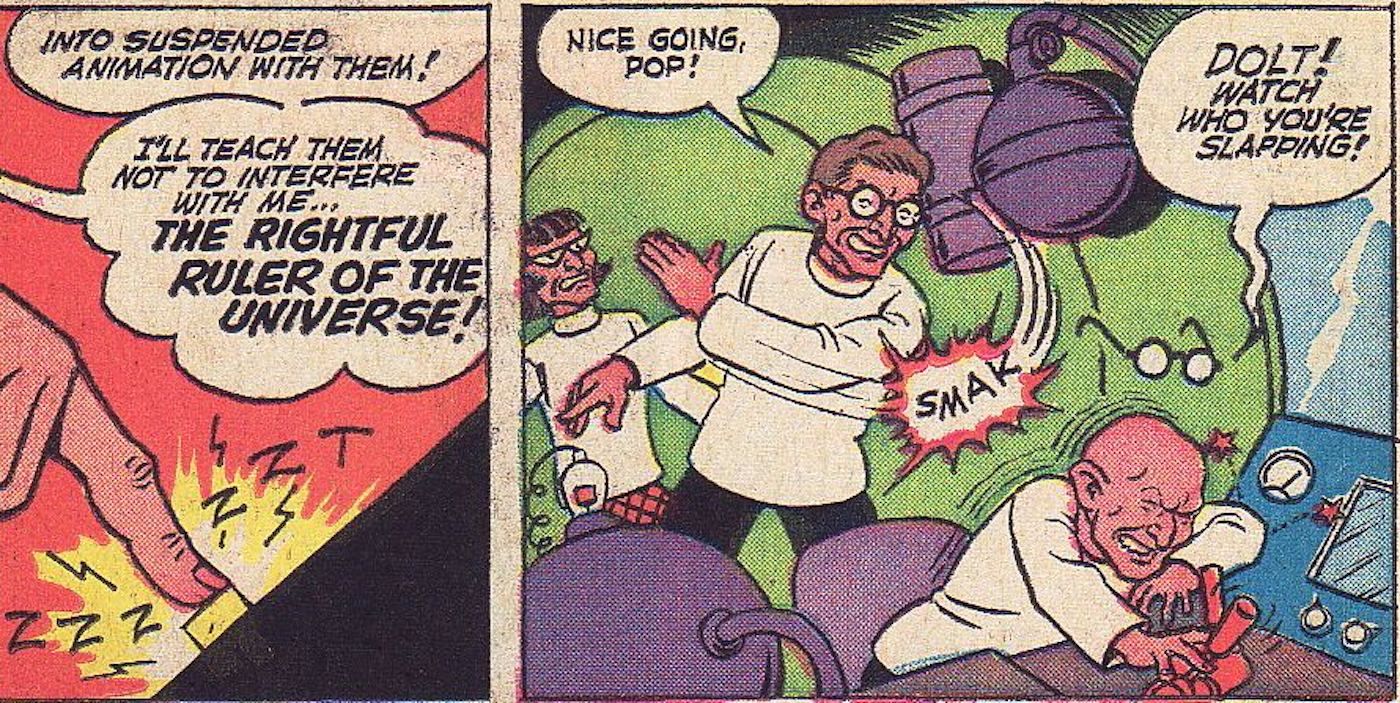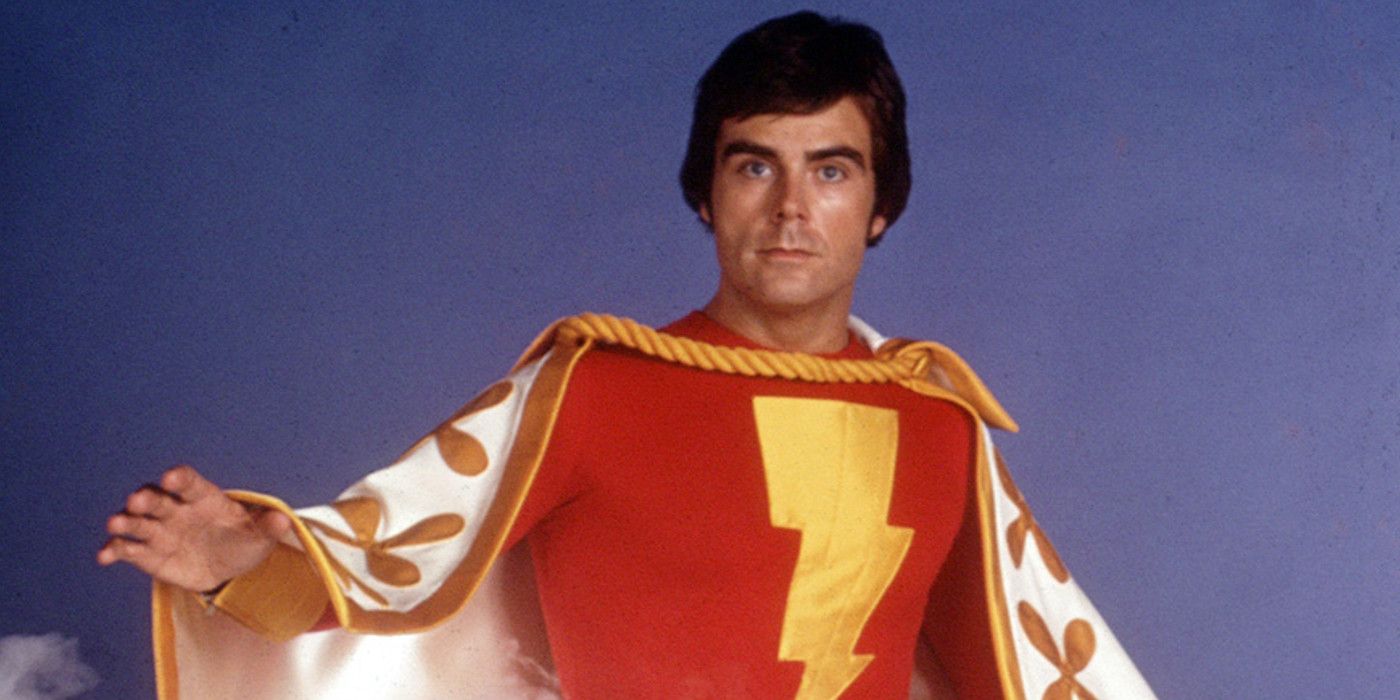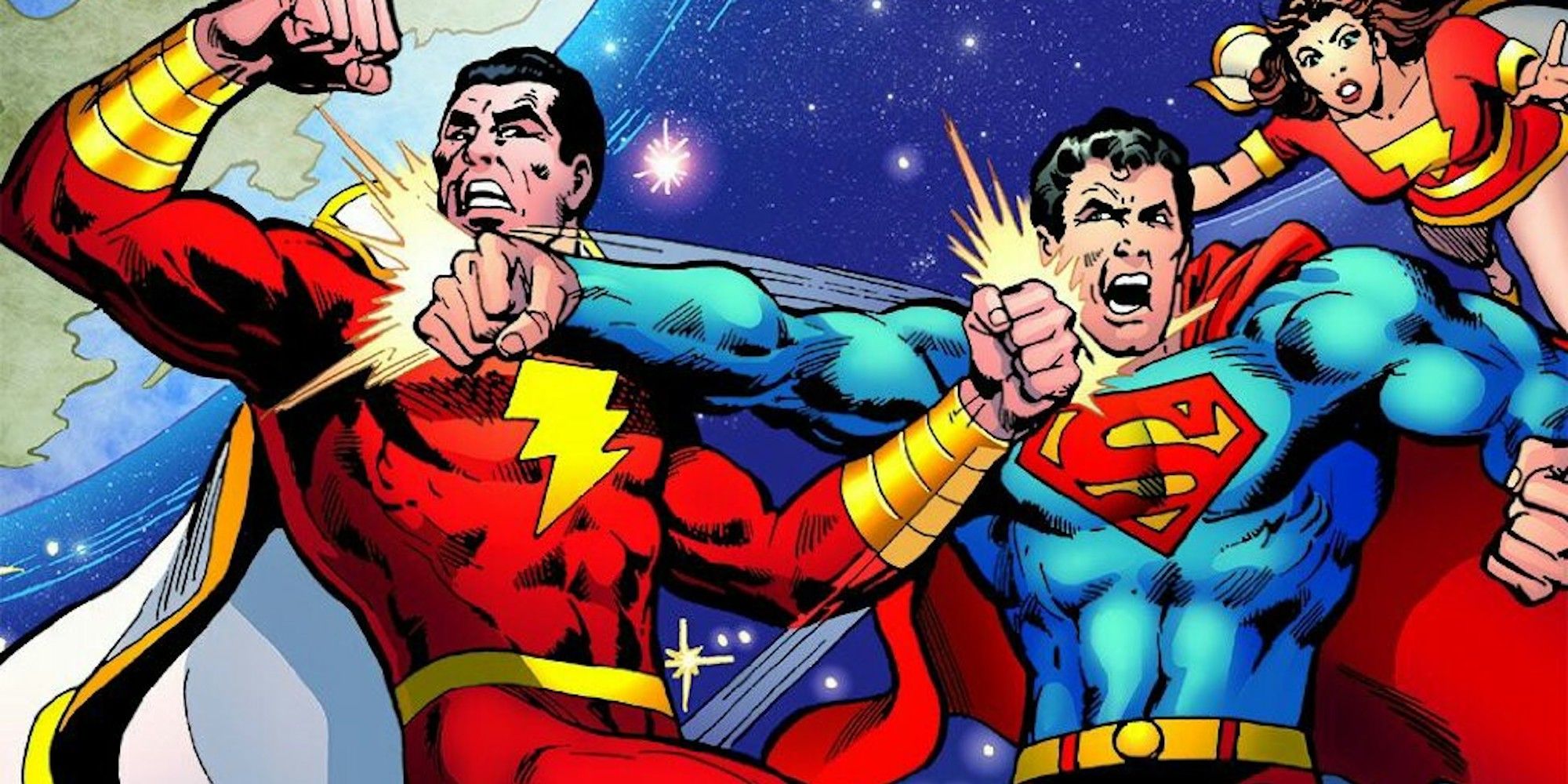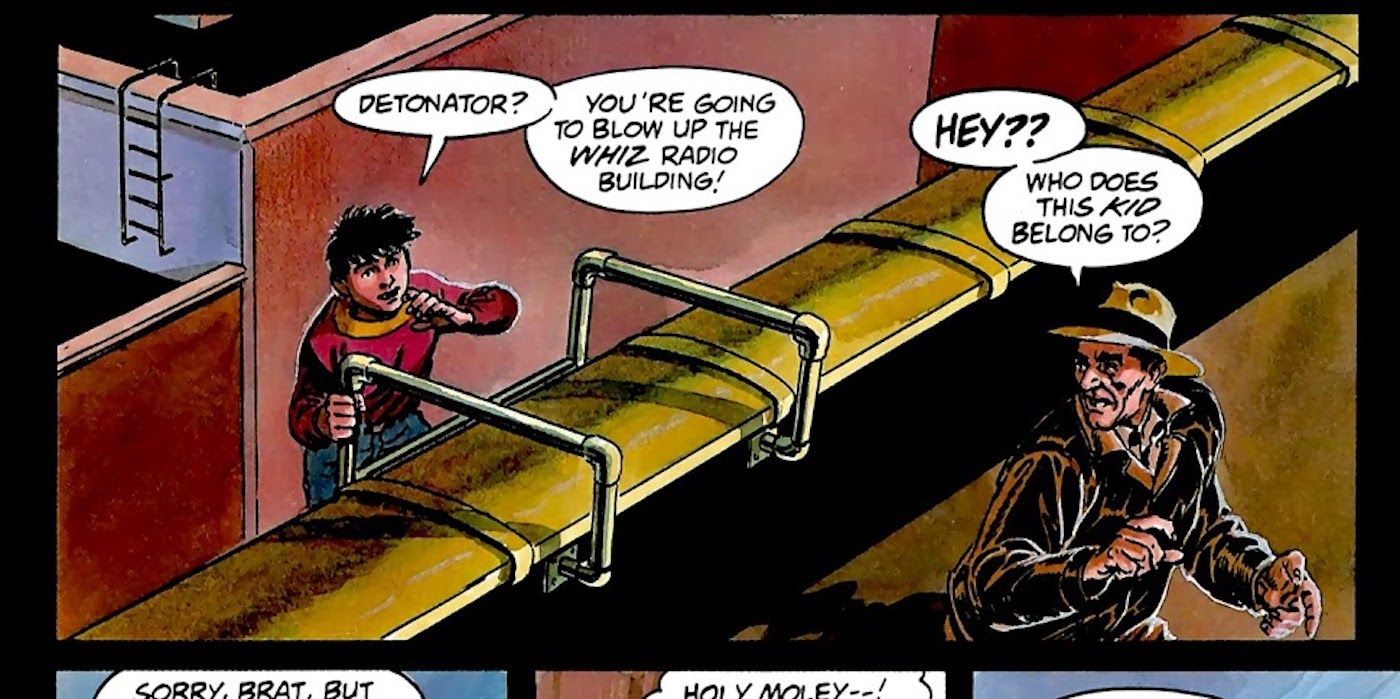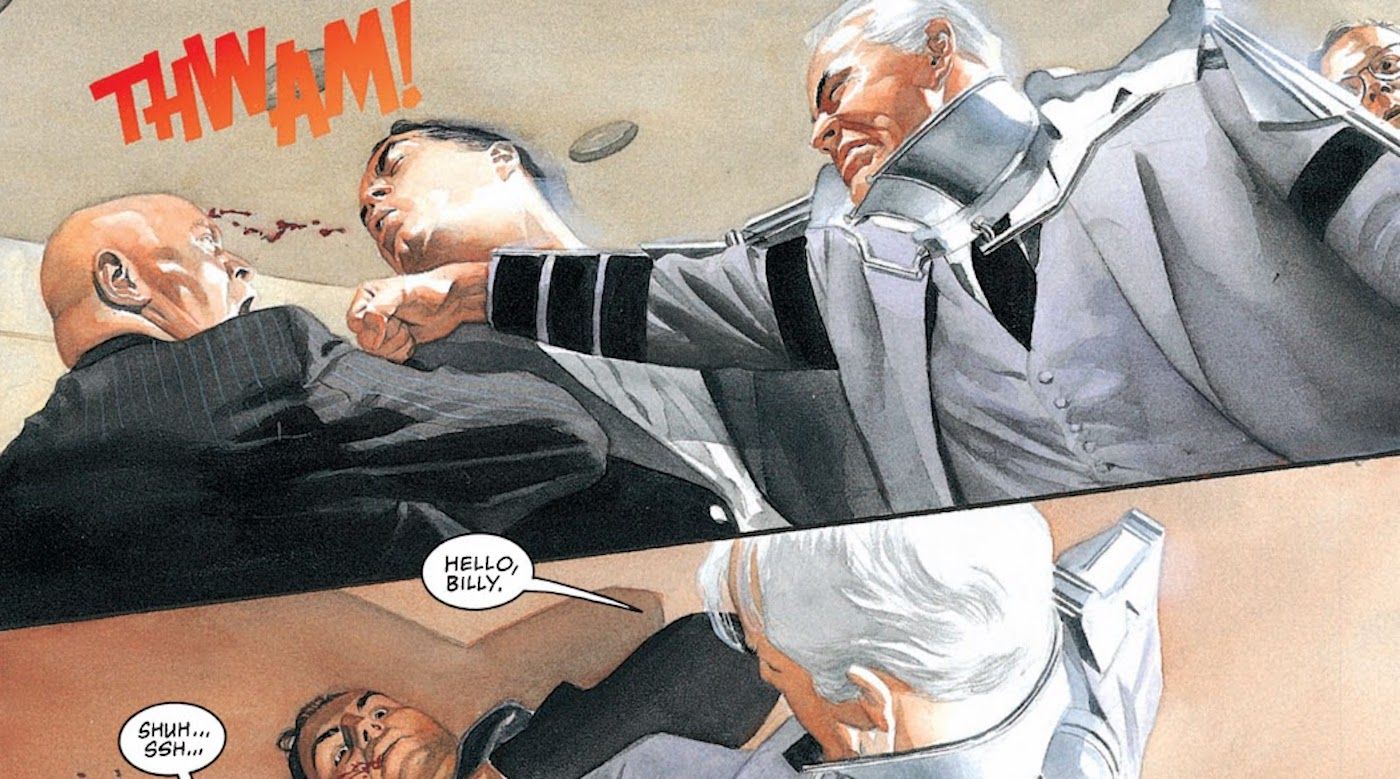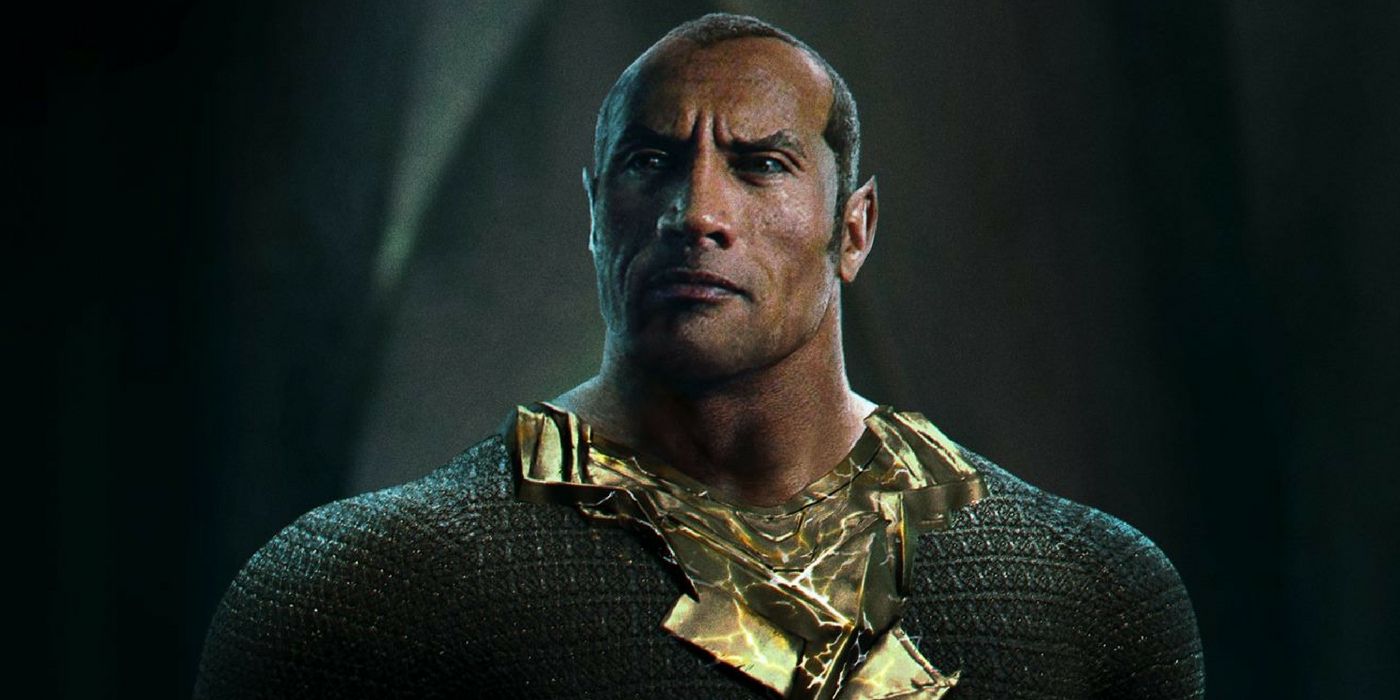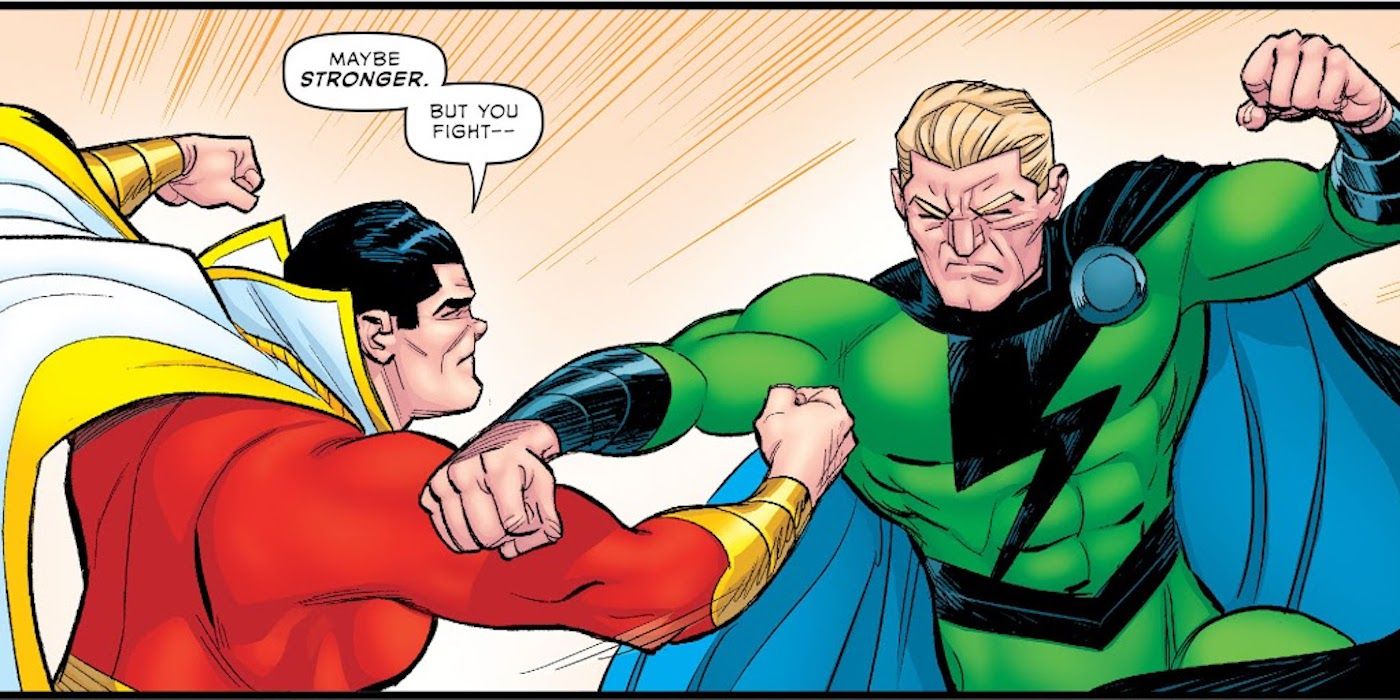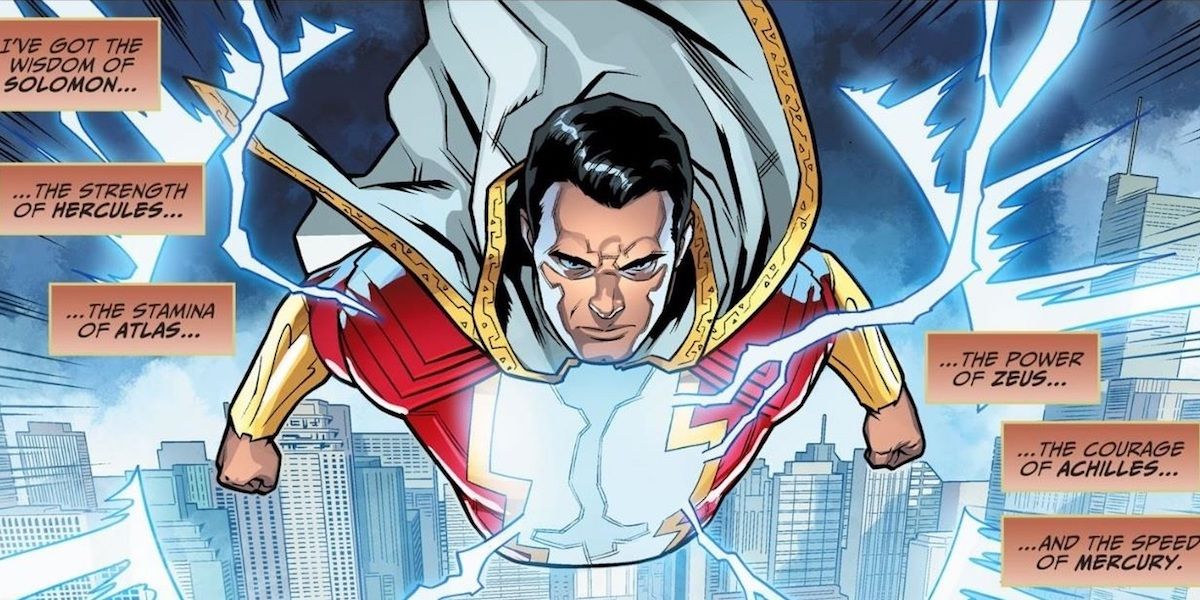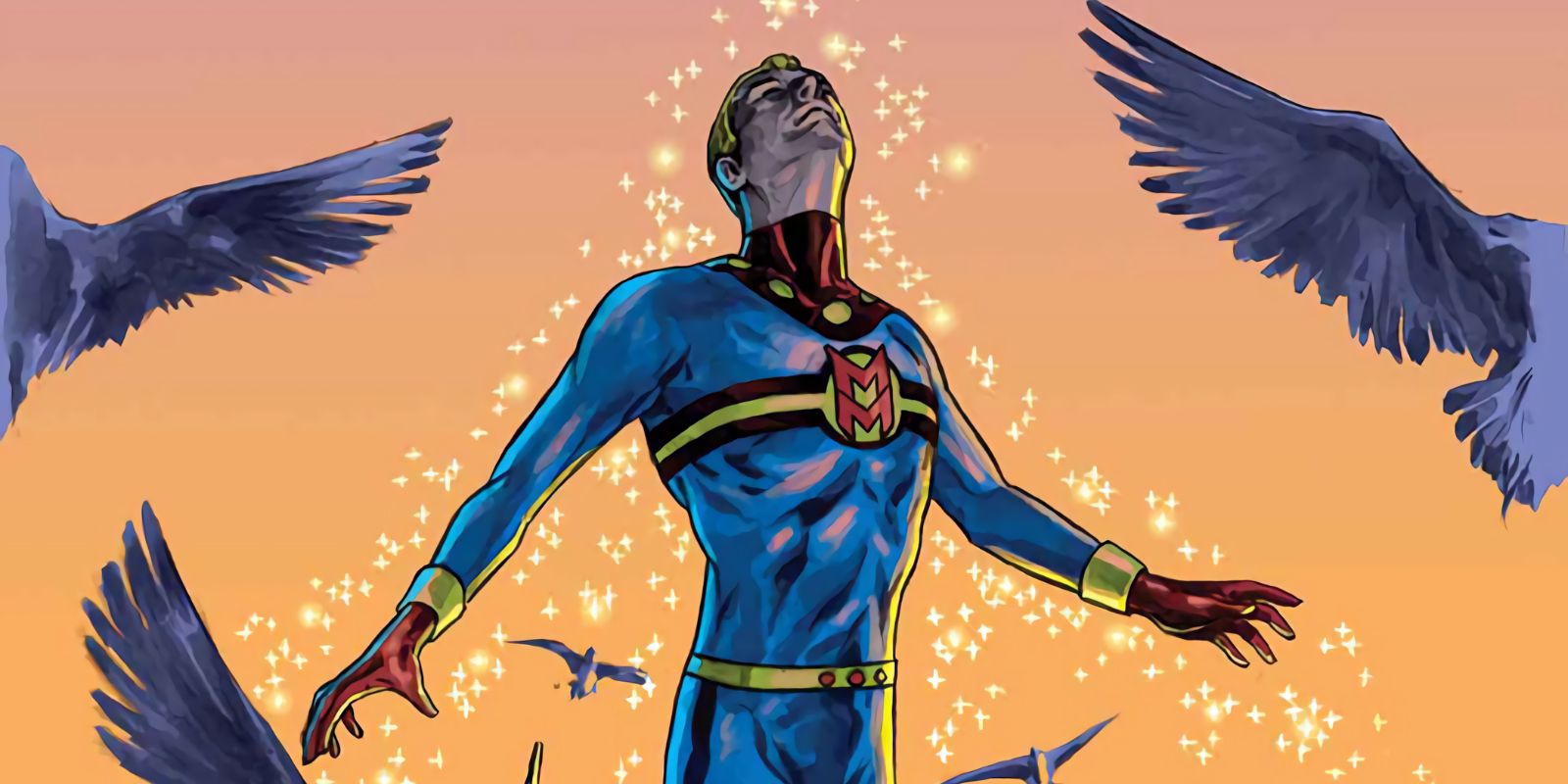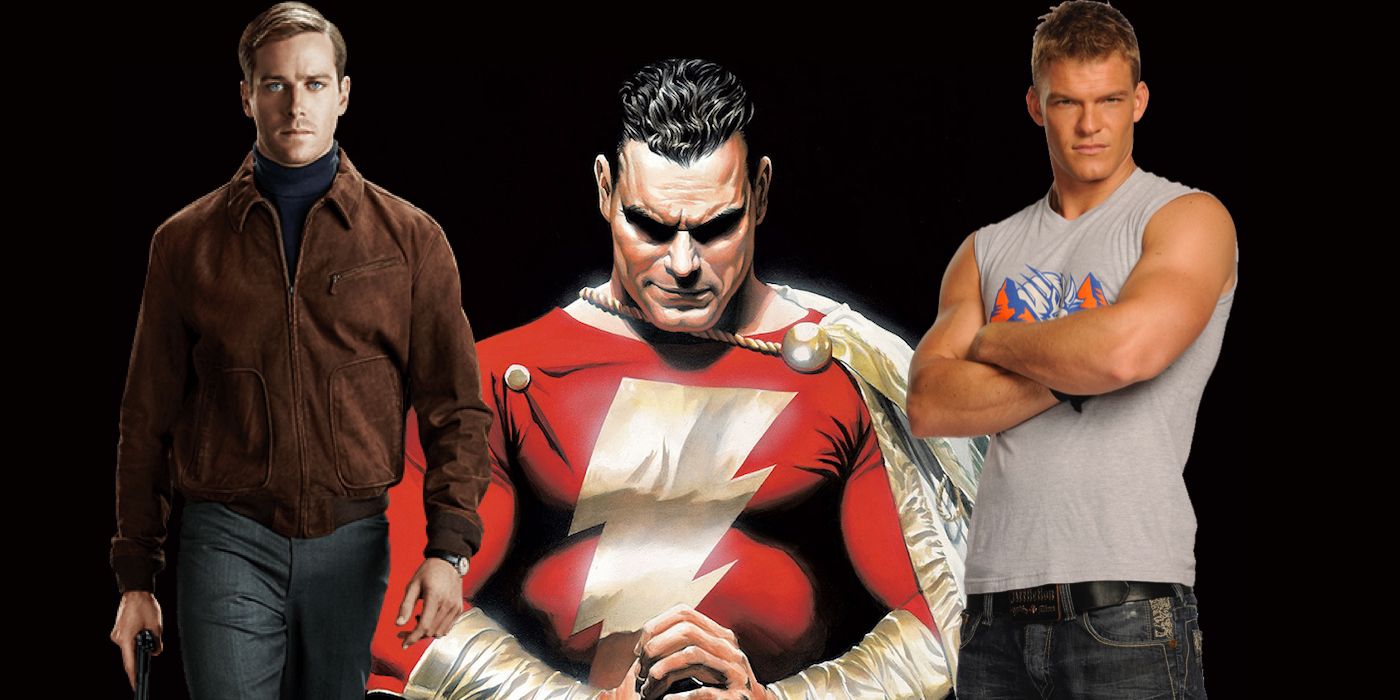Years before Mar-Vell, Monica Rambeau, or Carol Danvers became known as Captain Marvel, the name belonged to boy reporter Billy Batson.
The magus Shazam granted the homeless orphan the power to become Captain Marvel, World's Mightiest Mortal, whenever he said the wizard’s name. At the sound of “Shazam!” a lightning bolt transformed Billy into an adult with the wisdom of Solomon, the strength of Hercules, the stamina of Atlas, the power of Zeus, the courage of Achilles and the speed of Mercury.
Captain Marvel’s powers were roughly equivalent to Superman’s. Like the Man of Steel, he worked as a reporter in his daily life, and battled an evil, bald scientist, Dr. Sivana. The style of Captain Marvel’s adventures soon grew distinctly different, though, with a touch of whimsy Supes didn’t have. Cap has also run into legal obstacles Superman never faced, which is why he’s now known as Shazam. Which Warner Brothers has confirmed is also the name of the next DCEU film to start shooting. Here's the lowdown on Shazam, AKA Captain Marvel, AKA "the Big Red Cheese."
17. Captain Marvel wasn't created by DC
During WW I, one Wilford "Captain Billy" Fawcett launched a successful joke magazine, Captain Billy’s Whiz Bang, which became the beginning of Fawcett Publications. In 1939, the company branched into the newly popular field of comics. Superman was a certified smash hit, so the company, run by Fawcett's sons after his 1940 death, decided to create their own Superman. The hook, though, would be that the hero was really a tween boy.
The company planned to call the character Captain Thunder, but the name was already taken, as was Flash Comics. The hero finally debuted as Captain Marvel in 1940, in Whiz Comics (“Captain”, "Billy" and “Whiz” were all a hat-tip to Fawcett’s original magazine). The comics line soon added other popular heroes, including Bulletman and Spy Smasher.
Although Fawcett eventually got out of comics, it continued as a successful publisher. Fawcett’s Gold Medal Books were a landmark in paperback publishing, the first line to release original paperback novels rather than republish hardbacks.
16. The Big Red Cheese had the best-selling comic book of all time
Before long, Captain Marvel outsold Superman; some estimates say Cap eventually moved two million copies of each issue. He not only appeared in Whiz Comics, but in Captain Marvel Adventures, plus there were spinoff series built around the Marvel Family (see #15 ).
The whimsical approach undoubtedly helped. For instance, in “Sivana’s Good Inventions,” Cap discovers his archfoe’s darkest secret — a collection of weapons Sivana considers failures because they do good things. Like a death ray that won’t kill anything but rats. Cap sets out to give the gadgets to humanity; Sivana tries to stop him for fear that he’ll lose his evil cred. It’s hard to imagine Superman and Lex Luthor doing that.
Plus as Shazam director David F. Sandberg has said, Captain Marvel is the ultimate in wish fulfillment. No need to be born on Krypton or train for years, just say one magic word — any kid could do that, right? Thousands of fans whispered “Shazam” over the years, just to see if they could.
15. Cap had a Marvel Family long before Superman had a Superman Family
The Big Red Cheese’s success made franchising inevitable. First came the Lieutenant Marvels, three other kids named Billy Batson who wound up sharing a part of Billy’s magic power when they said “Shazam!” together.
Then came the more famous Captain Marvel Jr. After super storm trooper Captain Nazi crippled young Freddy Freeman and killed his grandfather, Captain Marvel saved Freddy’s life by channeling some Shazam power into him. As a side effect, Freddy became a hero whenever he said “Captain Marvel!” Though that made it hard to say his own super-name.
Next came Mary Marvel. Mary was Billy’s twin, separated from him when she was adopted by a wealthy family. She had the Shazam powers too, though they derived from six goddesses. Both she and Junior got their own series.
And let's not forget Uncle Marvel, a scam artist who pretended to be an over-the-hill superhero. He eventually reformed and started helping people, though he usually needed the real Marvels to get him out of any trouble.
14. Cap’s rogue’s gallery includes a little old lady and the world’s wickedest worm
The whimsy of Cap’s adventures also extended to his villains.
In the days when continued stories were a rare thing, Cap spent two years fighting the Monster Society of Evil, a gathering of his greatest foes under the leadership of the never-seen Mr. Mind. When the time came to reveal the society's leader, the creators tried to think of someone suitably monstrous. Instead, they went in the opposite direction: the worm Billy had brushed off his shirt in the previous issue turned out be Mr. Mind.
Aunt Minerva was a crone who ruled the underworld with an iron fist, able to outshoot, out-punch, and out-intimidate even the toughest hood. As her five husbands had all died young, she was in constant pursuit of hubby number six — and had no qualms about steering suitable candidates to the nearest preacher at gunpoint.
13. Shazam will not be Captain Marvel’s first movie
As if beating Superman’s sales wasn’t enough, Captain Marvel also beat him into live action. When Republic couldn’t cut a deal to make a Superman movie serial, it turned to Fawcett. The Adventures of Captain Marvel hit the big screen in 1941, and proved to be one of the best cliffhangers around.
In this take on the World's Mightiest Mortal, an archeological expedition unearths the Scorpion Idol, an ancient superweapon. The archeologists split up the lenses that channel the idol’s energy beams, but a masked villain, the Scorpion, will stop at nothing to gather them together. Shazam bestows Captain Marvel’s power on Billy Batson to prevent that.
Despite Cap’s efforts, in the final chapter, the Scorpion has hold of both the reassembled idol and a helpless, gagged Billy. Wanting even more power, he demands Billy tell him the secret of becoming Captain Marvel. Then he pulls off the gag so Billy can answer…
While many people claim to remember a 1990s movie Shazaam, it not only has no connection with Captain Marvel, it doesn’t exist.
12. The one foe Cap couldn’t defeat: DC’s lawyers!
DC didn't like Fawcett beating them at their own game. In 1941, they filed suit against Fawcett on the grounds that Cap was a knockoff that violated DC's Superman copyright. The suit targeted the comics, the movie serial, and even Captain Marvel merchandising, which successfully scared off any companies that might have been interested in the latter.
After the case reached the courts in 1948, a judge ruled that DC had for technical reasons lost the copyright to Superman. DC appealed and Judge Learned Hand ruled that no, the copyright held. Hand also found that Fawcett had infringed on DC's copyright, but DC would have to identify specific stories that Fawcett had ripped off. This led to DC's lawyers collecting evidence that Superman bounced bullets off his chest well before Captain Marvel. Meanwhile, Fawcett's attorneys collected evidence of earlier heroes such as Popeye doing the same thing.
In 1953, Fawcett finally threw in the towel. Superhero sales flatlined in the 1950s, so the company had little reason to keep shelling out legal fees. Instead, it shut down its comics line and agreed never to publish Captain Marvel again. DC would eventually buy the rights to the character they'd once sought to destroy.
11. While Captain Marvel was out of action, Marvel Comics trademarked his name
In the twenty years before DC revived the Big Red Cheese, the Captain Marvel trademark — the right to put out a book titled Captain Marvel — was up for grabs. In 1966, M.F. Enterprises released a short-lived Captain Marvel series about a robot who could split its body into independent parts (the series also featured characters named Plastic Man, the Bat, and Dr. Fate).
That may have inspired Marvel to latch onto such a natural trademark and introduce the alien warrior Mar-Vell as Captain Marvel in 1967. Or it may be that DC talking about bringing the World’s Mightiest Mortal back convinced Marvel to make a pre-emptive strike. Either way, when DC revived Fawcett’s Captain Marvel in 1973, they had to settle for calling his series Shazam (with a subhead that he was “the original Captain Marvel”).
That’s been the case ever since. Even with Mar-Vell dead, Marvel never goes too long without having a legacy hero take up his name (and keep the trademark alive).
10. Cap’s arch-enemy put him into suspended animation for 20 years
So where was Captain Marvel all those years between his last Fawcett appearance and Shazam #1? Rather than have Billy all grown up, the first issue revealed that Sivana had trapped the Marvel Family and their entire supporting cast in a sphere of suspendium. Too bad Sivana's kid slipped up and got them stuck in the globe with the heroes. The sphere floated through space for two decades before solar heat melted it enough for Billy to break free. Everyone returned to Earth unaged.
The stories used C.C. Beck, one of the definitive Captain Marvel artists, and tried to capture the whimsy of the originals, but frequently felt off. Denny O’Neil, Shazam's initial writer, has said he didn't think Cap had a place among the more sophisticated (at least in O'Neil's eyes) comics and comics readers of the Bronze Age. E. Nelson Bridwell, who took over the series later, had more success with the character.
The series did establish that the Fawcett Characters lived on Earth-S in DC’s original multiverse, separate from the more serious DC heroes of Earth-One.
9. Cap has already had two television series
Having Captain Marvel fighting evil on Saturday morning TV would seem a match made in heaven. Unfortunately, it was a match made in the 1970s, when the networks were feeling pressure to make Saturday mornings educational, not just fun. 1974’s Shazam series definitely avoided fun.
In this live-action series, Billy traveled around the country, helping troubled teens solve their problems, with the Elders (Solomon, Hercules, etc.) explaining the week’s life lesson so everyone could see the show was serious stuff and not mere entertainment.The writers managed to squeeze in enough danger that Billy had to become Captain Marvel eventually.
Saturday morning finally got it right when animated Captain Marvel shorts appeared as part of the Kid Super Power Hour anthology series in 1981. Cap has also appeared on TV in Justice League Unlimited and Batman: The Brave and the Bold. Of course, it’s probably easier to list DC characters who haven’t appeared on those series.
8. Cap and Superman have thrown down several times
It’s a comics geek debate for the ages — would the Man of Steel or the World’s Mightiest Mortal triumph over the other?
DC first tackled the question in Superman #276, when Captain Thunder arrived on Earth One. The hero of a parallel world, he gained his abilities from Native American magic when he cried “Thunder!” (power of Tornado, speed of Hare, etc.). Manipulated by some of his enemies, Thunder attacked Superman until the Man of Steel cured him and sent him home.
The Big Red Cheese and Supes met for real a few years later in Superman vs. Shazam, one of DC’s tabloid-sized specials. The villain in this one plotted to smash Earth-One and Earth-S together; to keep their two mightiest heroes busy, he tricked them into fighting each other. Superman definitely had the upper hand that time.
The two also squared off in an issue of All-Star Squadron, and one episode of Justice League Unlimited, among other tales.
7. Captain Marvel is an awkward fit with the rest of the DC universe
In the 1980s, DC’s Crisis on Infinite Earths crossover event replaced DC's sprawling multiverse with one single Earth where everyone coexisted. That meant Captain Marvel — light-hearted, boyish, whimsical — now fought alongside heroes ranging from serious and realistic to grim and gritty. His first post-Crisis series went with a darker, more realistic take, and it didn't work. And who needs the World's Mightiest Mortal when you've got Superman, who can perform all the same feats?
Elliott Maggin, who wrote the Captain Thunder story, has said he created Thunder precisely because he didn’t think Cap belonged on Earth One. Similarly, John Byrne dropped plans for a 1990s Shazam series when he learned it would have to be part of the mainstream DCU. Jerry Ordway eventually gave DC a post-Crisis Cap in Power of Shazam. Since that series ended, nobody's done much with the Marvel Family. Time will tell if the movie changes that.
6. In Kingdom Come, Batman punches Captain Marvel out
1996's Kingdom Come took a look at the DCU of the future. It's a bleak setting where the classic DC heroes have left the stage and their successors engage in mindlessly destructive combat (reflecting the creators' view of 1990s comics). As the world starts spinning completely out of control, the heroes have to get their house in order; the supervillains and the world's governments have their own agendas.
Captain Marvel was a major wild card in all this. We see him first as Lex Luthor’s aide, formally dressed and never using his powers — but he doesn't have to. Nobody wants to provoke Lex into letting Marvel off the leash.
Then Batman, after springing a trap to take Luthor down, decks the World’s Mightiest Mortal with one punch. It wasn't Captain Marvel that Luthor broke, it was a grown-up Billy, enslaved by years of Luthor's brainwashing.
At the climax, Billy becomes Captain Marvel again, then confronts Superman. This time Cap kicks his butt, yelling "Shazam," then ducking so Superman gets blasted with the magic lightning, again and again.
5. Captain Marvel’s evil predecessor later became a Justice Society member
For the first issue of Marvel Family, the writers had to come up with a foe who could match Cap, Junior, and Mary. Enter Black Adam, Shazam’s first champion, banished to the stars when he became corrupted by his power. After 5,000 years, he’s finally made it home, and he's every bit as powerful as the Marvels. Fortunately, Uncle Marvel tricked Black Adam into saying "Shazam" and reverting to his non-super self.
In his Justice Society run, Geoff Johns reinvented Black Adam to be more antihero than villain: he’s extreme in his methods, but genuinely seeks to protect people. In Johns' recent Shazam reboot (see #3), Black Adam still wants to save the world — he just believes he has to destroy it first.
It's not surprising that Johns likes the guy. Black Adam is a renegade Marvel the same way Sinestro is a renegade Green Lantern — and Johns' run on Green Lantern shows he loves him some Sinestro.
As Johns is also DC Films' president, it's not surprising that Black Adam, played by Dwayne Jonson, will appear in his own movie rather than as Shazam's villain.
4. Cap recently got his own world in DC’s new multiverse
Two decades after erasing its multiverse, DC finally admitted that had been a booboo and recreated it. Grant Morrison’s series Multiversity explored some of the 52 worlds in the new multiverse, including Earth Five, AKA Thunderworld, the home of Captain Marvel.
Well, a Captain Marvel, as another version exists on Earth One (see #3). The Earth Five Cap, though, is the traditional Fawcett version, heroic but lighthearted. In the Thunderworld installment of Multiversity, he battles a scheme by Sivana — allied with his counterparts throughout the multiverse — to create an extra day in time, giving him 24 hours to destroy the Big Red Cheese once and for all (spoiler: it doesn’t work).
Whether DC will add more Thunderworld adventures or resume the kind of inter-Earth crossovers that it did so often in the original multiverse is yet to be seen.
3. DC has finally accepted that Captain Marvel’s name should match his comic
In the 2013 Shazam reboot, Geoff Johns gives us the latest iteration of Billy Batson and Cap — er, Shazam. Billy is a cynical, rebellious orphan bouncing from one foster home to the next. Because of Billy's underlying decency, the wizard Shazam appoints him as the new Shazam, guardian of magic against those, such as Black Adam, who would use magic for destruction. Billy also gets a new Marvel family, as he’s able to empower some of his foster siblings to wield the magic too.
This is actually the second time DC’s tried to switch the name. The 2006-08 miniseries The Trials of Shazam took place after Billy had retired as a superhero, stepping into the place of the wizard Shazam. With Cap gone, so were Freddy’s powers, so he set out to regain them from the “gods of magic,” a different Solomon, Hercules, etc. than before. Freddy took Shazam as his heroic name, but all of that got wiped out in DC's New 52 continuity reboot.
2. Without Captain Marvel, there wouldn’t be a Miracleman
Not only was Captain Marvel hugely popular in America, he hit it big in England too. When Fawcett shut the Marvels down, their British partner saw no reason to do the same. They simply created a knockoff character, Marvelman, with the magic word “Kimota!” Accompanied by Marvelman Jr. and Kid Marvelman (no girls in this Marvel Family) he continued adventuring from 1954 to 1963.
Fast forward to 1982. As Alan Moore tells it, he imagined Marvelman's alter ego Micky grown into adulthood, struggling to remember that magic word he used to say .... and before you could say Kimota, Moore had turned Marvelman into his first attempt at deconstructing superherores.
The rebooted Marvelman faced legal battles that dwarfed DC/Fawcett, such as Marvel objecting to the very use of “Marvel” in the name. Captain Marvel became Shazam; Marvelman became Miracleman.
1. The new Shazam movie has been a long time coming
Billy Batson has been in movie limbo for a while. Warner Brothers announced back in 2014 that Shazam was on the development slate, possibly for 2016 … which has now became 2019. Different names were reportedly attached as the project's screenwriter over this time, and while Black Adam was originally going to be the big bad, that no longer seems to be the case.
As of this past week, things are finally moving on Shazam. Lights Out and Annabelle 2 director David F. Sandberg is officially signed to helm the film. Shazam has been identified as the next DCEU movie to start filming, still with a 2019 release date. Rumors are swirling that the lead actor's been signed, and with names like Armie Hammer and Alan Ritchson, we can expect an announcement on that front shortly.
How the World's Mightiest Mortal will fit into DC's movie universe? Well, we'll have to wait a little while longer to know for sure.
--
Who do you ant to see play Shazam on the big screen? Do you know of any other fun facts surrounding the character? Let us know in the comments.

